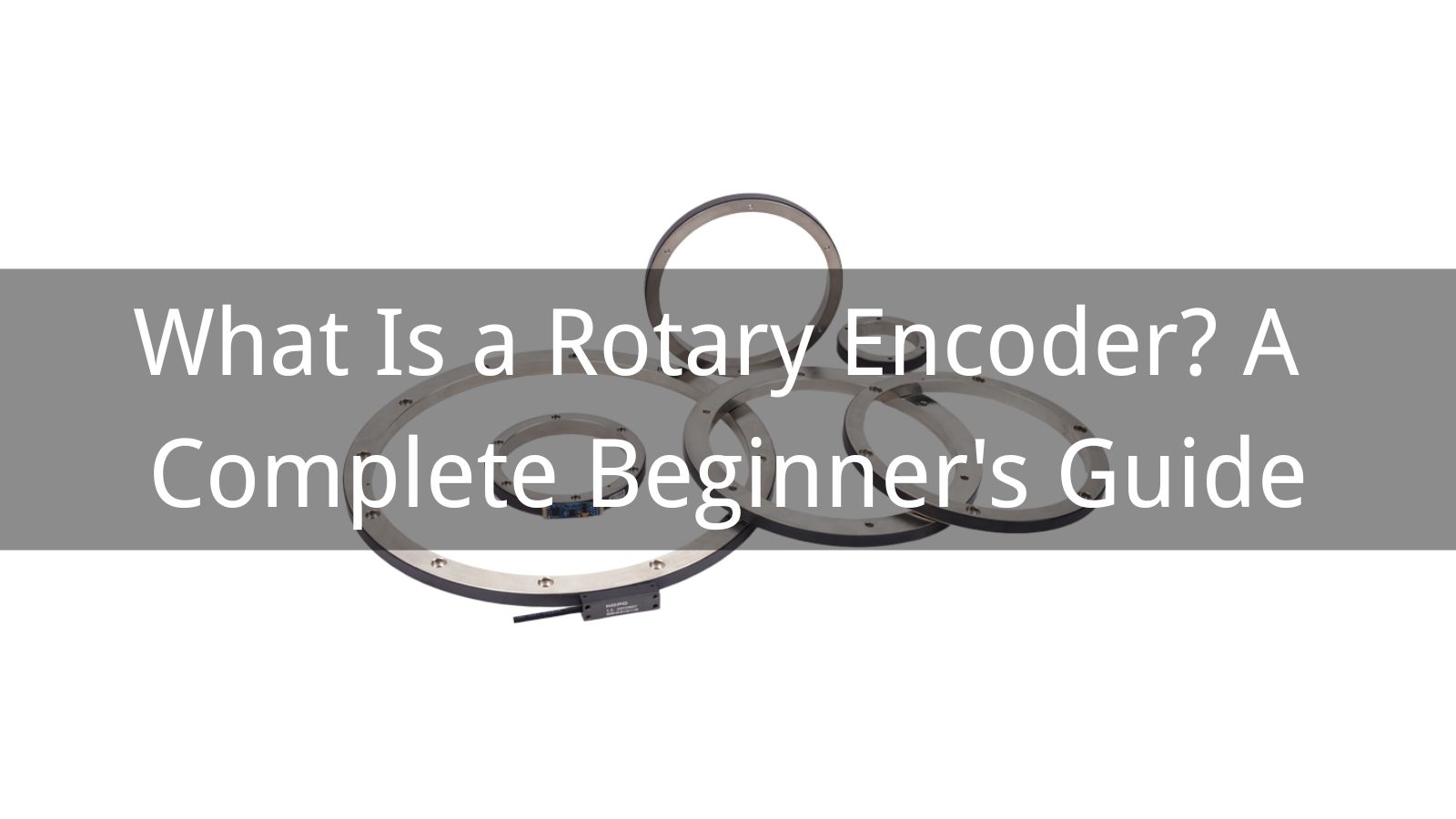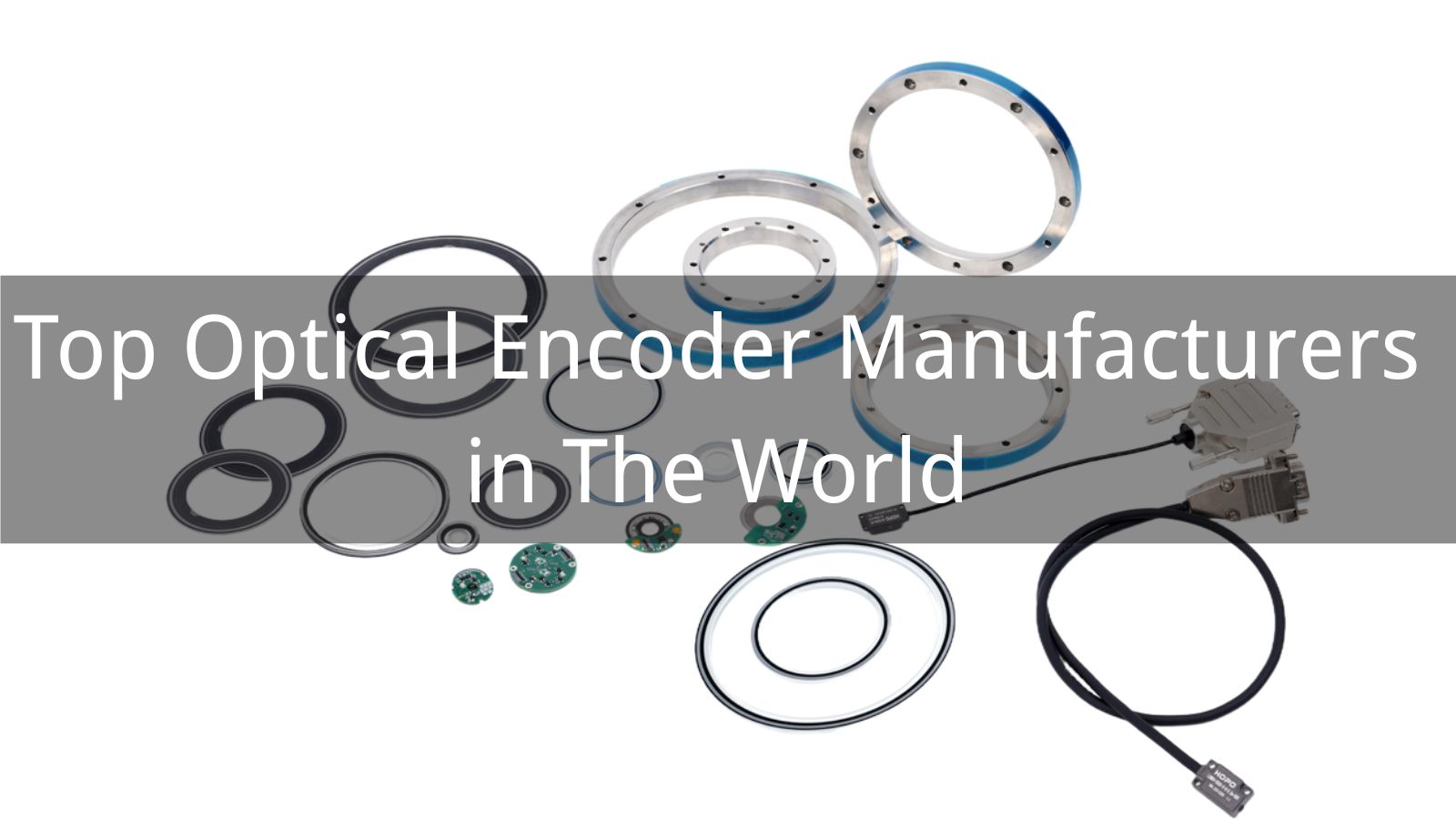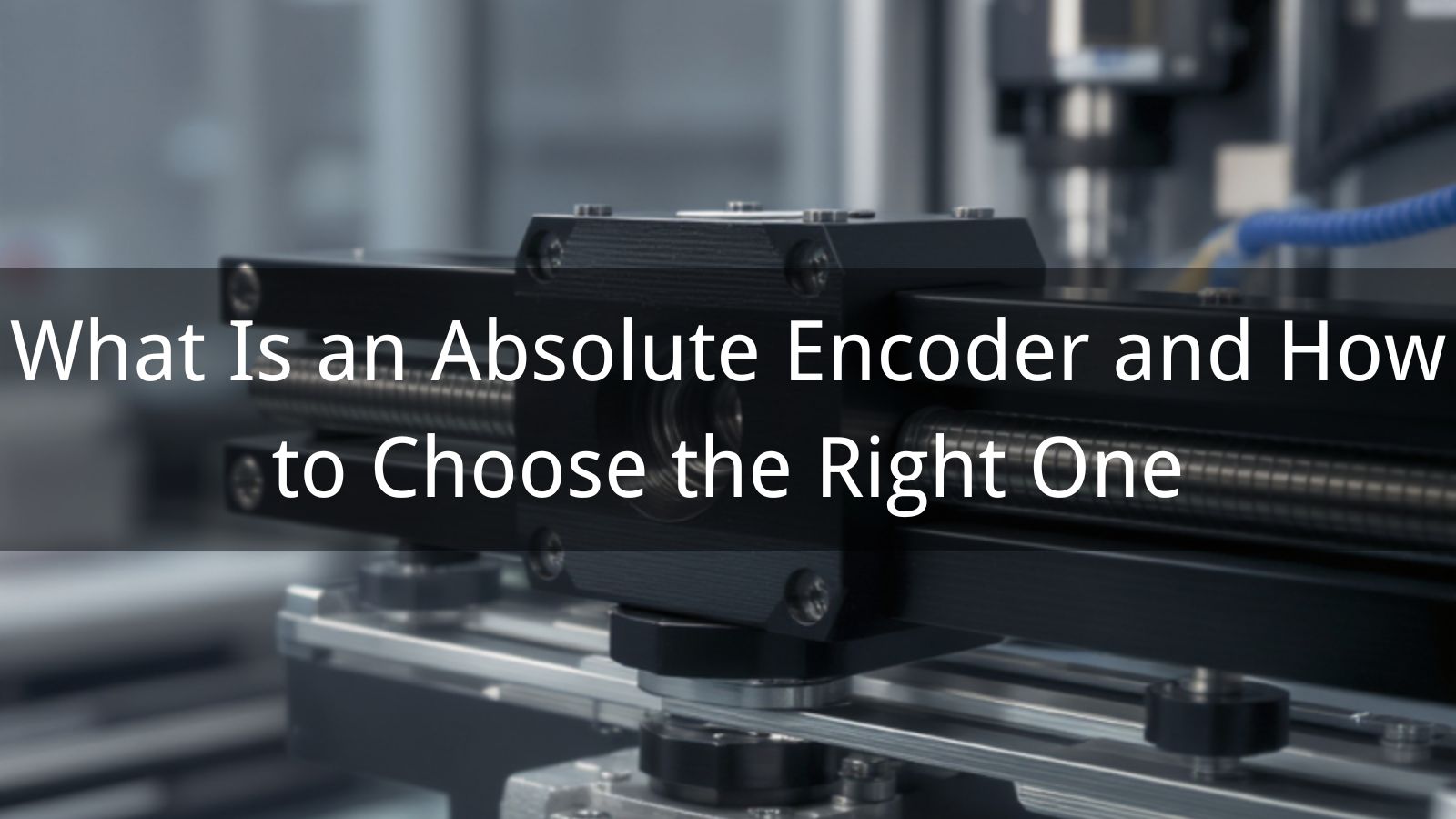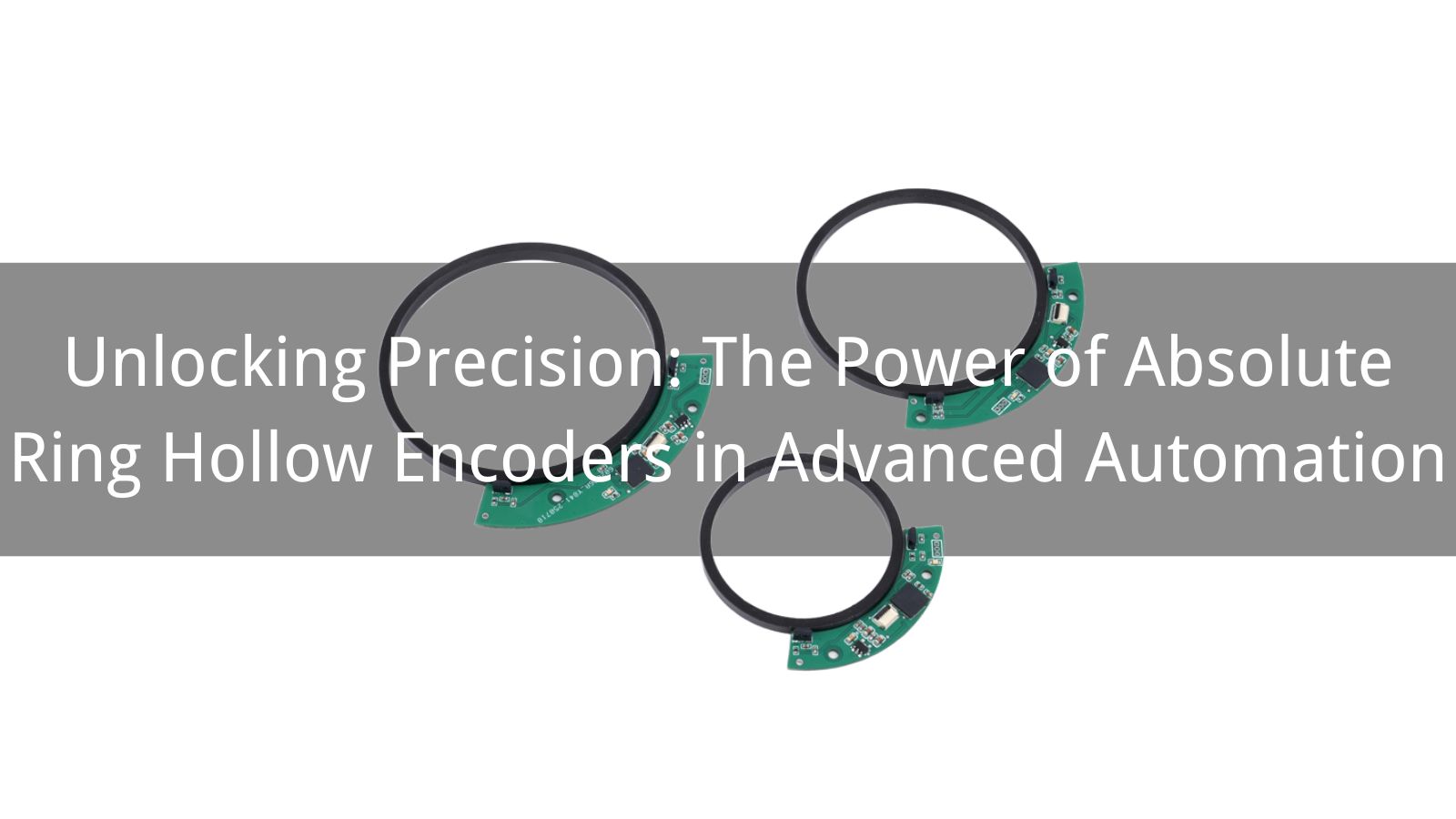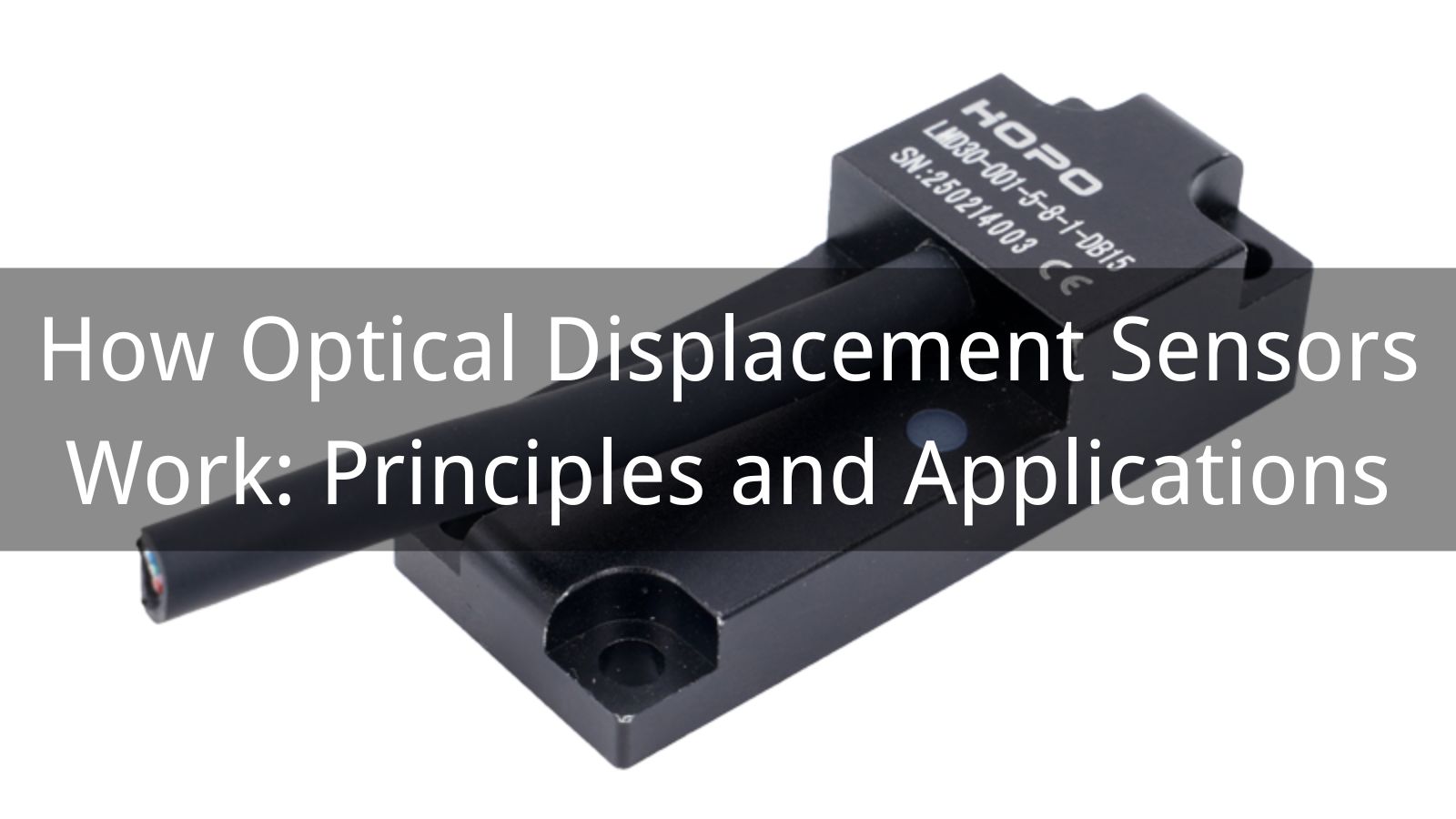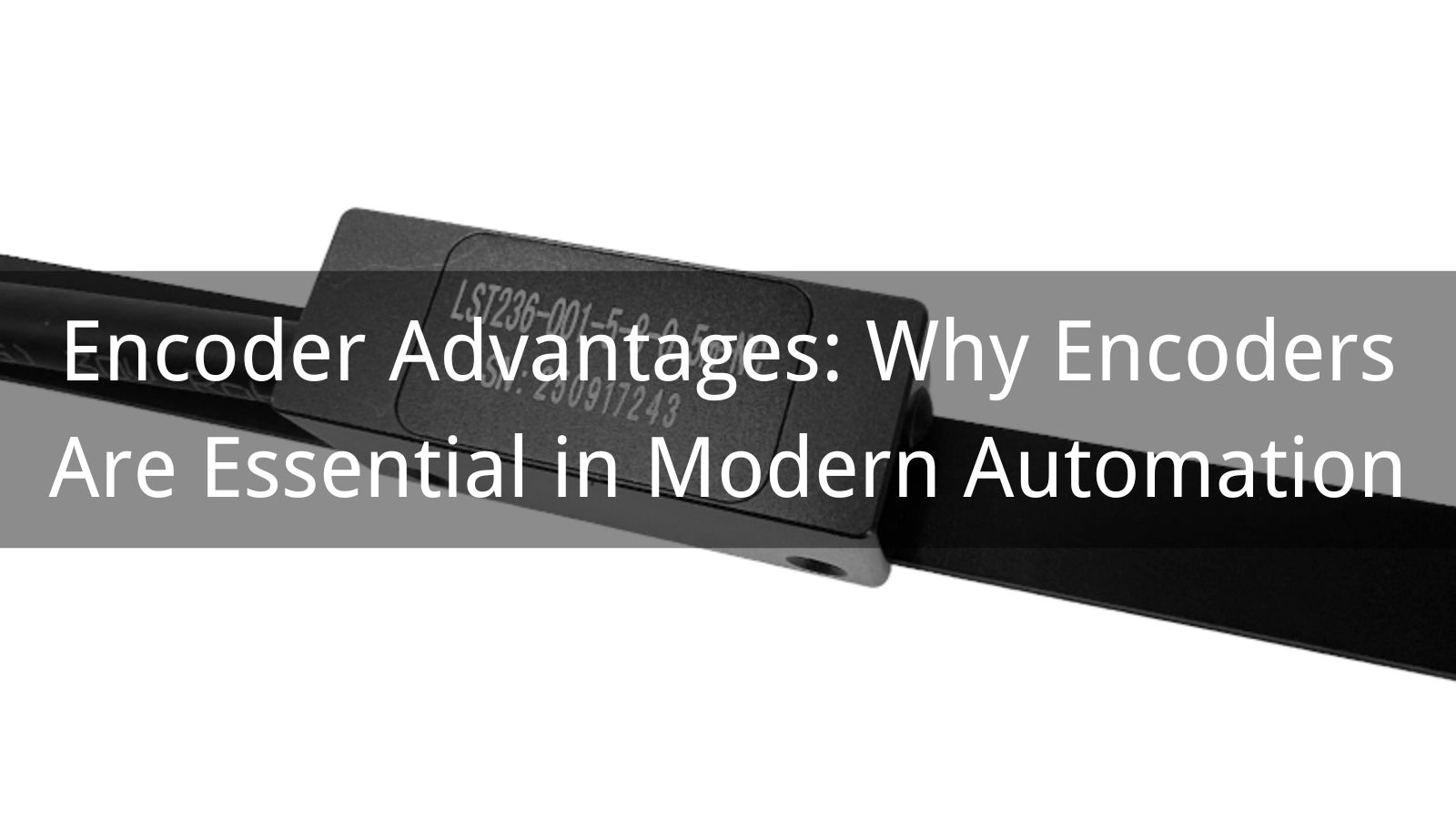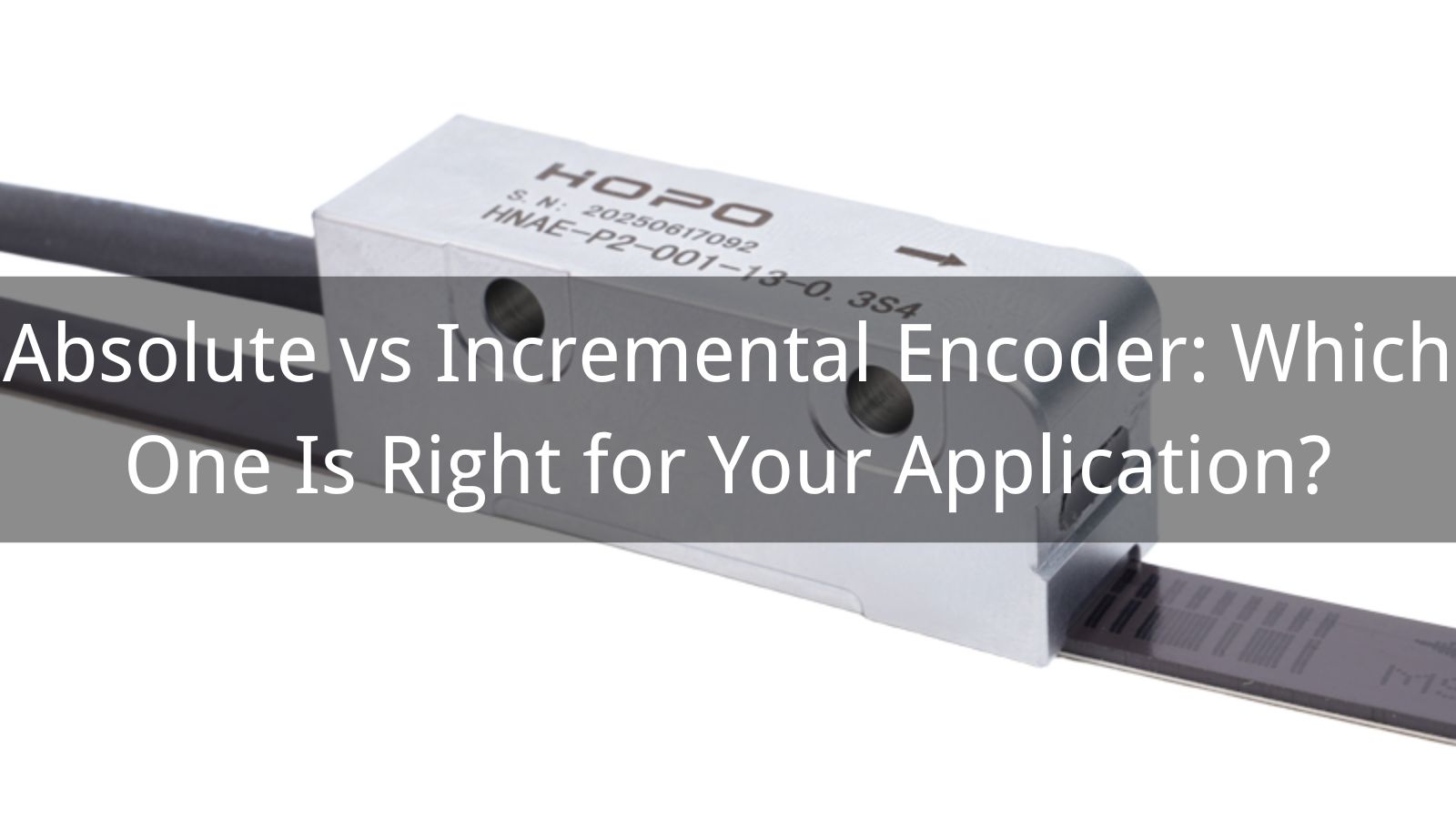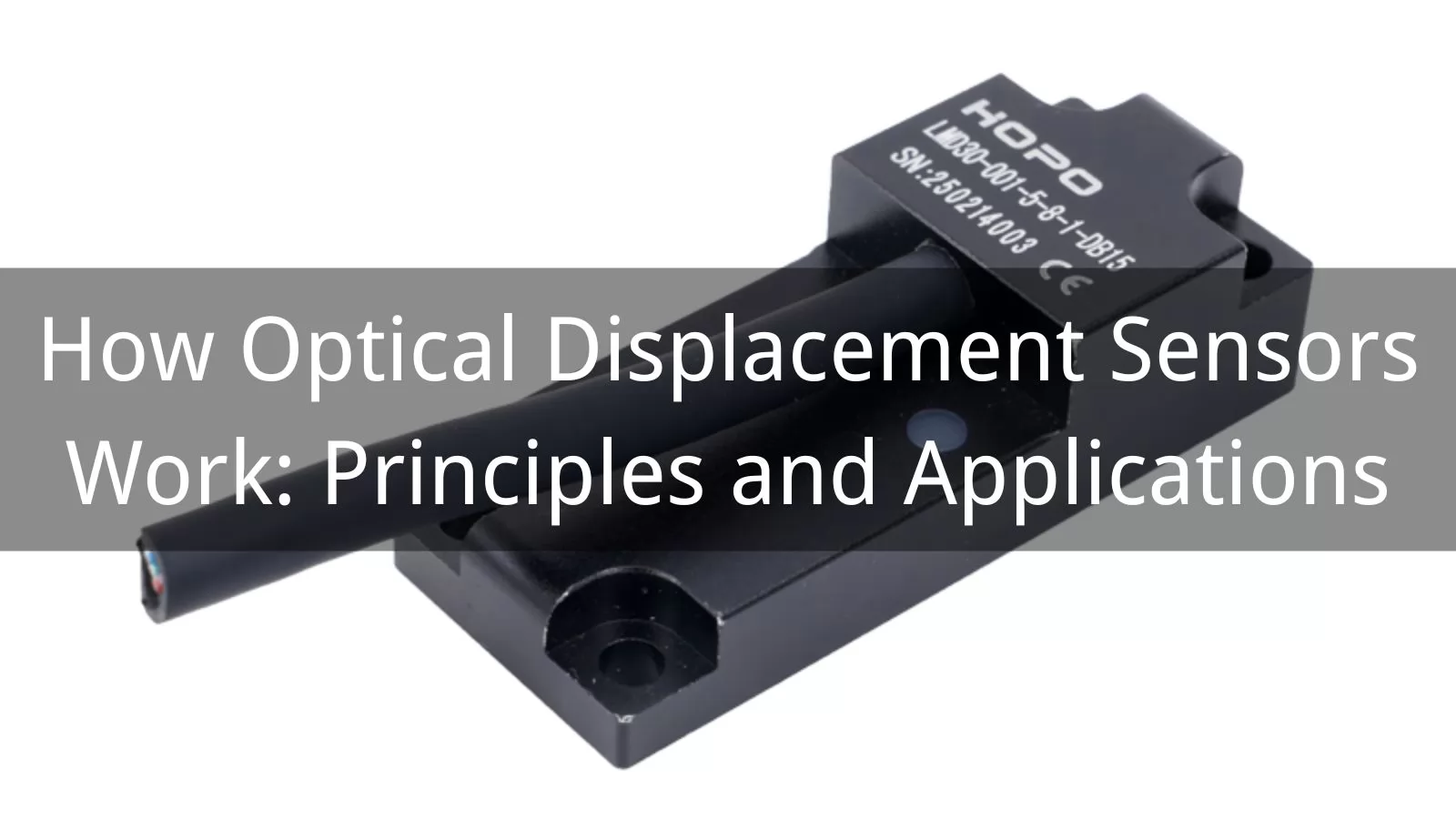
Optical displacement sensors play a vital role in today's precision measurement and automation systems. Using advanced light-based technology, these non-contact sensors accurately detect position, distance, and surface changes across a wide range of industrial applications. From robotic motion control to semiconductor inspection, an optical displacement sensor provides exceptional accuracy, speed, and stability even in challenging environments.
As industries demand higher precision and efficiency, understanding how optical displacement sensors work—and how they enhance measurement reliability—has become essential for engineers and manufacturers seeking smarter, more consistent performance.
An optical displacement sensor is a high-precision, non-contact measurement device used to detect changes in position, distance, or thickness with exceptional accuracy. Unlike traditional contact sensors, it uses laser or LED light to measure the displacement of a target surface through reflection and detection.
This technology is widely applied in automation, robotics, and quality inspection systems, where precise alignment and real-time feedback are essential. By converting light variations into electrical signals, optical displacement sensors provide reliable, micron-level measurement results, even on delicate or moving surfaces. Their combination of speed, accuracy, and durability makes them ideal for modern industrial measurement and optical metrology applications.
Optical displacement sensors operate based on the principle of optical triangulation or time-of-flight measurement, allowing for precise, non-contact detection of distance and position. A light source, usually a laser diode, projects a beam onto the target surface, and the reflected light is captured by a photodiode or CCD detector. The sensor's processor calculates the displacement by analyzing the change in light angle or travel time.
This technology enables high-accuracy, real-time measurement even in demanding industrial environments.By combining advanced optical signal processing with stable triangulation geometry, optical displacement sensors deliver exceptional resolution and repeatability, making them essential in precision manufacturing and automation applications where micron-level accuracy is required.
An optical displacement sensor operates through several key components that ensure precise, non-contact measurement. The system typically includes a laser light source or LED that emits a stable beam, an optical lens to focus and direct the light, and a photodiode detector or CCD sensor to capture reflected signals.
Advanced signal processing electronics then convert optical data into accurate displacement values. These technologies—especially optical triangulation and laser feedback systems—enable high-resolution distance and position detection, even on complex surfaces. Together, these components form the foundation of modern high-precision optical displacement sensors used in industrial automation, robotics, and semiconductor inspection.

Optical displacement sensors play a crucial role in a wide range of industrial applications that demand high precision and non-contact measurement. In robotics and automation, they provide accurate position feedback for motion control and component alignment. In semiconductor manufacturing, optical displacement sensors ensure wafer flatness and precision during inspection processes.
The automotive industry relies on these sensors for body assembly and surface quality measurement, while electronics production uses them to detect solder height and board flatness. With their superior accuracy, fast response, and versatility, optical displacement sensors have become essential tools in industrial quality control and 3D surface profiling, improving efficiency, consistency, and product reliability across manufacturing sectors.
Even the most advanced optical displacement sensors can experience variations in accuracy depending on environmental and application factors. Understanding these influences helps engineers and operators maintain consistent measurement performance and ensure reliable non-contact sensing results. Below are the key elements that affect accuracy and stability.
The reflectivity of the target surface plays a crucial role in optical measurement accuracy. Highly reflective or glossy materials can cause excessive light return, leading to signal saturation or measurement noise. Conversely, dark or matte surfaces absorb more light, reducing the signal-to-noise ratio. To minimize these effects, it's essential to select an optical displacement sensor with adaptive light control or a laser wavelength suitable for the target material.
External lighting conditions—such as direct sunlight, LED illumination, or strong reflections from nearby objects—can interfere with the optical sensing path. This may distort readings or increase measurement uncertainty. Using optical filters, shielding, or sensors with ambient light compensation helps maintain accurate results in complex industrial environments.
Temperature fluctuations can impact the optical components, altering the sensor's calibration and the alignment of internal lenses. Similarly, mechanical vibration can disrupt the laser path or detector stability, leading to inconsistent readings. To counter these issues, it's recommended to mount the sensor on a stable platform and perform optical calibration under the operating temperature range.
Incorrect sensor alignment or excessive tilt between the optical axis and the target surface can cause triangulation errors. Since optical displacement sensors rely on precise beam geometry, even small misalignments may reduce resolution. Always ensure the sensor is positioned perpendicular to the measurement surface and within the specified working distance to achieve optimal accuracy.
Regular optical calibration is vital to maintain long-term performance. Dust accumulation on lenses, sensor aging, or mechanical wear can degrade the optical signal. Scheduled cleaning, recalibration, and software-based correction routines help preserve high-precision measurement accuracy over time.
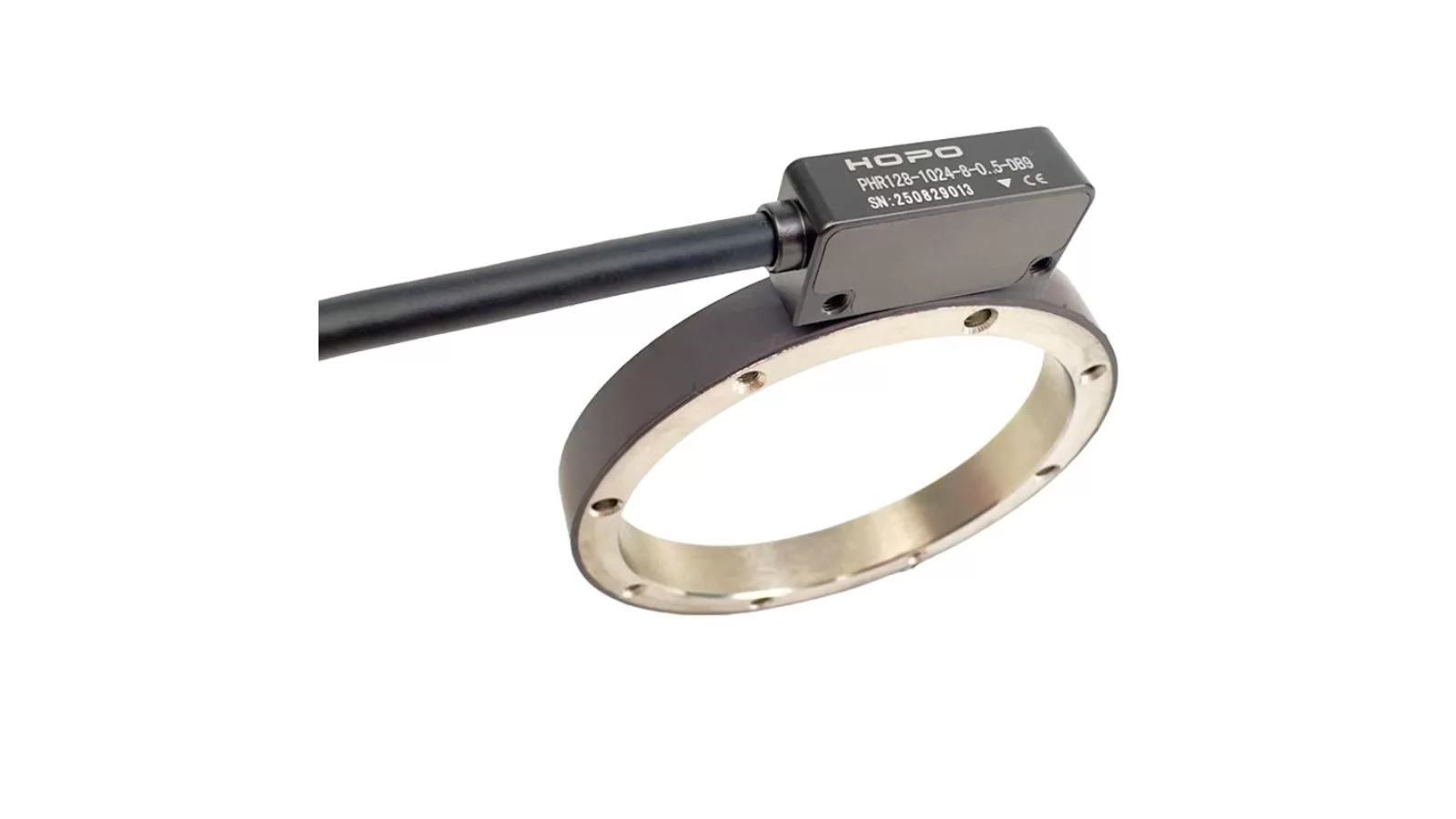
Choosing the right optical displacement sensor depends on your specific measurement needs and operating environment. Start by defining the measuring range and accuracy requirements for your application. For high-precision tasks such as semiconductor inspection or micro-assembly, a laser triangulation sensor offers superior accuracy and fast response. Consider the surface properties of your target—materials with varying reflectivity may require a confocal or interferometric sensor for stable performance.
Environmental factors like temperature, vibration, and ambient light also influence measurement reliability. Finally, ensure compatibility with your control systems for seamless integration. Selecting the best optical displacement sensor helps achieve consistent, non-contact precision measurement and enhances automation efficiency.
Future trends in optical displacement sensor technology are rapidly transforming precision measurement and automation. With the integration of AI-driven algorithms, these sensors can now analyze complex data patterns in real time, improving both accuracy and speed. The adoption of smart optical displacement sensors in Industry 4.0 applications enables predictive maintenance and seamless connectivity with IoT systems.
Manufacturers are also focusing on miniaturization and cost-efficient laser triangulation solutions to meet growing demands for compact and high-performance devices. As optical displacement sensors continue to evolve, they are becoming essential tools for achieving greater efficiency, reliability, and intelligence in modern manufacturing environments.
Optical displacement sensors have become indispensable tools for achieving exceptional accuracy and stability in modern measurement systems. By leveraging advanced optical triangulation and non-contact sensing technology, these sensors deliver reliable, high-resolution data across industries such as robotics, semiconductor manufacturing, and precision automation. As technology continues to evolve, integrating smart optical displacement solutions enables greater efficiency, consistency, and quality control in every application.
To optimize your operations and stay ahead in precision measurement, choose a trusted optical displacement sensor manufacturer that provides tailored, high-performance sensing solutions for your specific needs.
